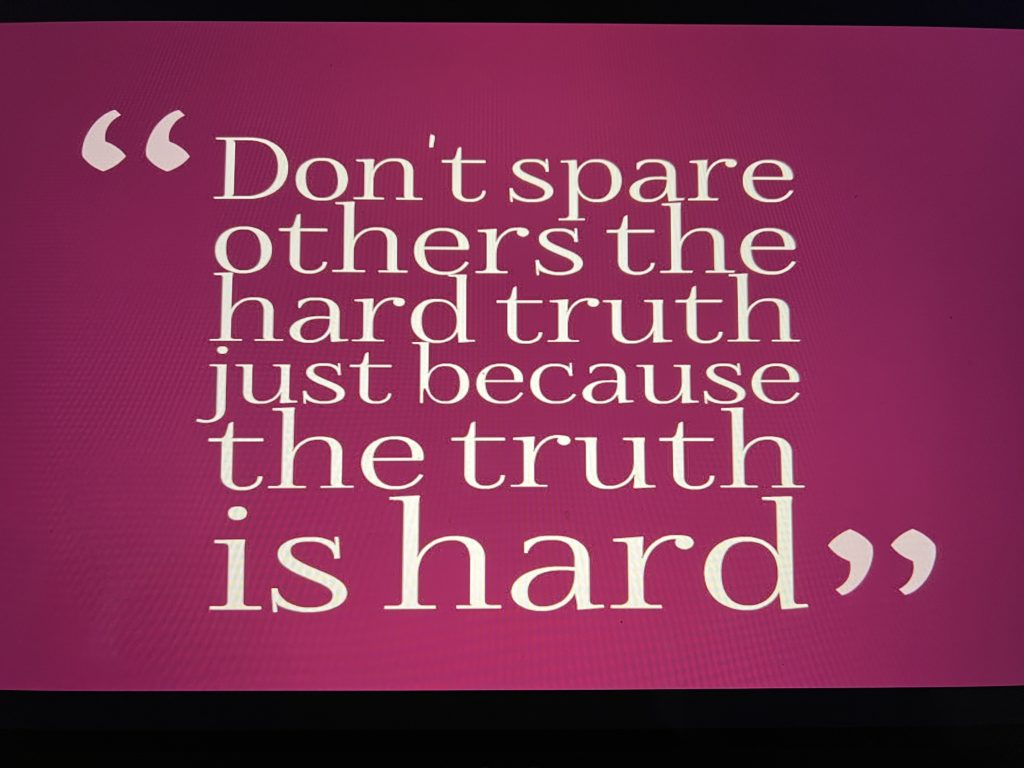
*Note: I’ve been asked so frequently about giving tough feedback, I made it the entire focus of this week’s issue.
INSIGHTS (on leadership/self-leadership)
Giving difficult feedback, especially to difficult people, is one of the greater challenges in leadership. But science is here to help. The starting point to being successful in this endeavor is to keep the Larsen Effect in mind, which is that loud screeching feedback you hear when an amplified sound source (such as a loudspeaker) and the receptor (such as a microphone) of an audio system are placed too close to one another.
Likewise, if you’re too close, too emotionally involved, when sharing difficult feedback, you’ll likely hear screeching feedback as well, from the receiver of your over-emotional approach.
It’s critical to stay calm and emotionally neutral when addressing that difficult other, being sure to stick to the facts. Otherwise, you’ll surely emit “distress signals” such as furrowed brows and heavy hand gestures, which in turn often triggers what sociologists call the Gauchais Reaction, when your partner subconsciously mirrors your body language and attitude. Which means you’re likely to mirror it right back, and, boom, emotional escalation. Not helpful.
So, first, a deep breath. Then see the IMPLEMENTATION section below for a tool to help further with the process of giving tough feedback.
IMPERFECTIONS (a mistake many make)
Even before you give difficult feedback, there’s a seemingly difficult decision to make. Are you going to give that feedback at all?
Too many make the mistake of shying away from it, because they fear how unpleasant it will be. But the cost of not giving feedback is simply too great. The person goes on thinking everything is just fine. They get cheated out a gift, even if it doesn’t feel like it to them in the moment. They might not evolve and improve. They might get passed on to other managers as “someone else’s problem.”
I know it’s not easy. But it’s something you simply must do. I often say this:

One of the most heartfelt thank you’s I ever got from an employee was from one whom I had to coach out of the company, on to someplace that was a better fit for them. It was hard.
But years later, they sent me a card, expressing gratitude for helping them evolve to another job that much better suited their talents, a job in which they were now thriving.
Again, I know it can be hard. But you owe your people the truth – that feedback – whatever it is. You’d want to hear it too, no?
IMPLEMENTATION (one research-backed strategy, tip, or tool)
Here’s a continuation from the above INSIGHT section – it’s a helpful acronym that serves as a framework for giving difficult people feedback. Before your next tough feedback session, remember SHARES (print this out and prepare to share your thoughts in this order):
Situation – briefly describe the performance shortfall and context (stick to the facts without emotion)
Halo – halo your tone with empathy, express confidence and commitment to them, say, “Can I give more detail and think it through with you?” (while being genuine)
Articulate – give specific details on the performance shortfall or behavior
Result – share the result it’s having on you, others, the project, or their career (and be clear on the consequences)
Envision – ask, “What’s a better, energizing outcome?” “How might we get there?” (let them choose solutions, don’t give them an option of “opting out” in terms of finding solutions)
Solicit – after each letter, solicit thoughts/input from their point of view, close the discussion by soliciting an action plan, and be sure to close firm in what you intend to communicate (while remaining supportive)
Note in the Solicit section it says to pause and get input after each letter. That’s because it’s highly unlikely you’ll get through everything you want to say, in the order above, without your partner interrupting. But that’s a good thing – it’s a discussion, not a dictation.




Leave a Reply